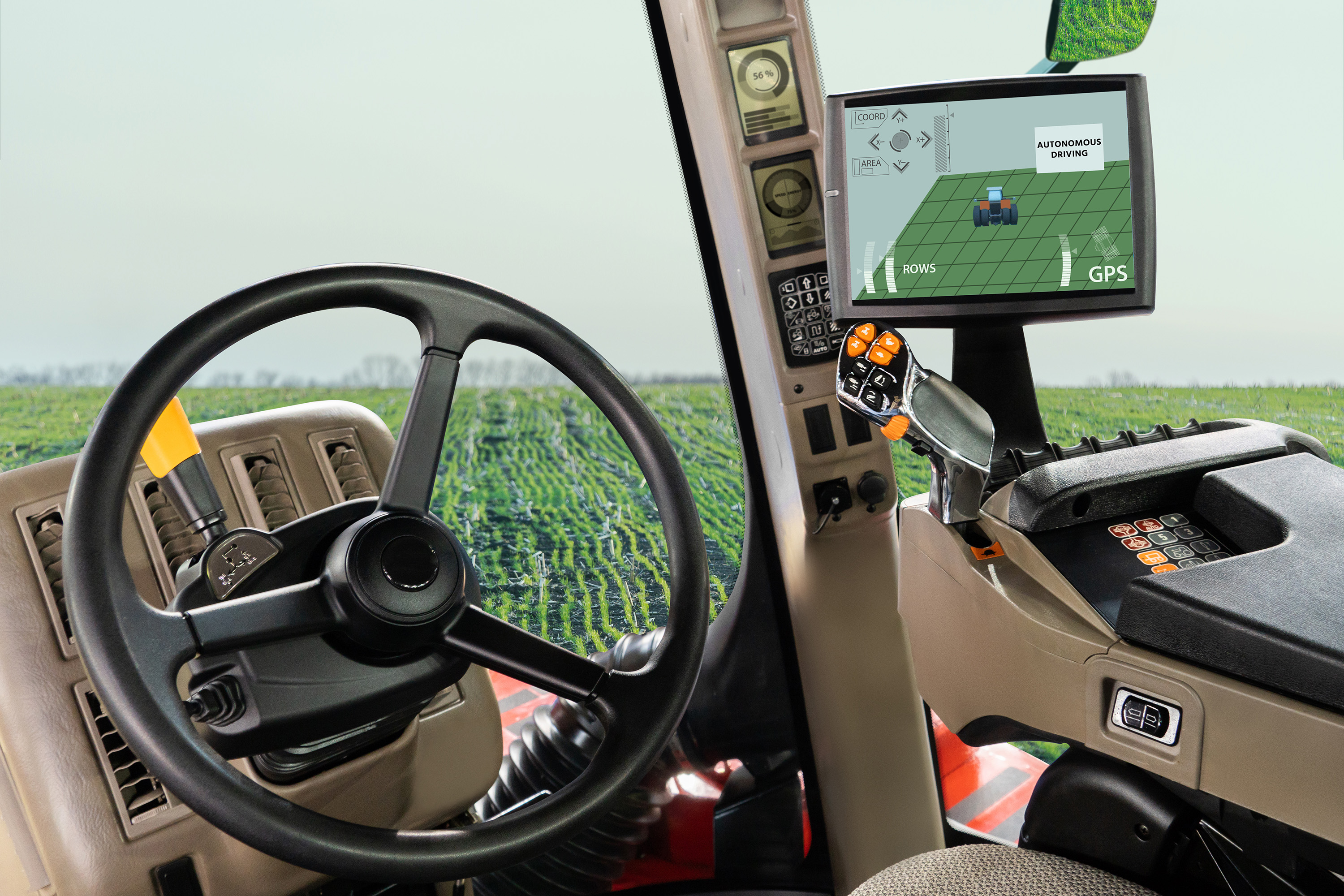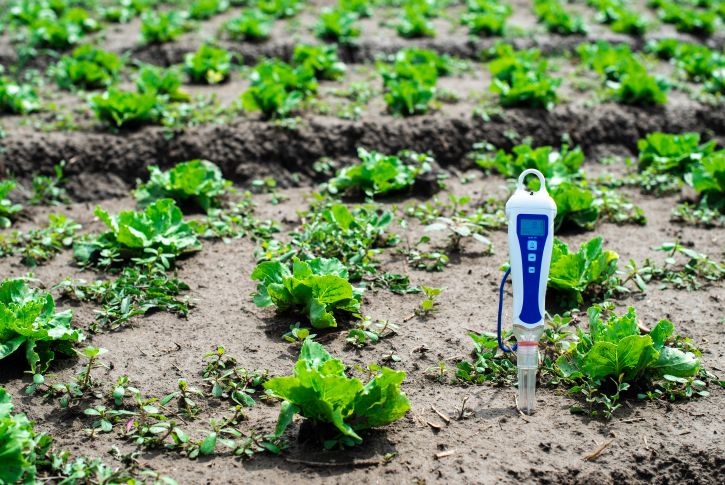To produce in a more environmentally friendly way, at lower prices and with ever higher quality, these are the requirements of modern agricultural technology. The solution to that is called smart or precision farming. This is made possible by the increased use of electronics.
Smart Agriculture: Sensors record many factors such as soil quality and harvest volume in correlation with the site in question. Some of the collected data is used directly on site, but is also evaluated in the cloud to create detailed plans for the next task. (Photo: istockphoto.com/Scharfsinn86)
Smart agriculture makes it possible to fulfill the demands of agriculture to produce more but also more environmentally friendly, at lower prices with higher quality. Sensors record many factors such as soil quality and harvest quantity in correlation to the site in question. Some of the collected data is used directly on site, but is also evaluated in the cloud to create detailed plans for the next task. With the new TQMa64xxL and TQMa243xL series of modules, TQ provides the right technology foundation.
Business computers provide additional intelligence
The electronics required for this are being installed in more and more agricultural machines and vehicles. Depending on the device and the task, there are specialized functional computers (electronic control units, electronic control units). Example: A field sprayer, which previously only produced a continuous mist, uses the function computer to apply crop protection in a targeted manner. For this purpose, a working computer is connected to the tractor’s main electronic control unit – usually via ISOBUS – and takes on intelligent control of the nozzle. Multiple sensors, GPS data, and valve states must be read and processed in real time to achieve the desired accuracy. Everything is connected to the road so that crop protection is not unnecessarily applied to areas that have already been sprayed – this protects the farmer’s wallet and the environment at the same time.
Electronics requirements for field applications
- Small and powerful, it can be used in any weather and on any terrain
- Low power consumption to avoid waste heat problems and to ensure a long service life
- Real-time ability to evaluate sensors and device control for greater accuracy
- Functional safety to reliably avoid accidents and emergency stops
- Data collection interfaces
- Communication for control and data transmission including CAN for ISOBUS
- Updates via USB or Over-the-Air (OTA)
- Scalable computing power, as farmers have very different requirements for their work equipment and manufacturers of agricultural machinery and their suppliers have to act accordingly
- Lots of memory for data collection but also for different language versions
- Security functions also for blockchain management and device leasing
- unified development environment
- Long term availability
- inexpensive
The combined technology of the Sitara AM64x and AM243x modules meets the requirements of modern agricultural technology
At first glance, this list of requirements seems difficult to implement. With Texas Instruments’ new Sitara AM64x and AM243x family of controllers, there’s now a fitting starting point: With Arm Cortex-R5 cores, components are real-time experts. The additional Cortex-M4 is designed as an “insulated core”, which can perform its service independently and is unaffected by other cores, and is therefore pre-engineered for functional safety tasks – Texas Instruments plans to obtain IEC 61508 certification accordingly. Features such as runtime security diagnostics, Monitoring voltage, temperature, clock, window monitoring timer (WWDT) and drive CRC for memory integrity checks is preset for the M4 core. If more computing power is needed, the AM64x can rely on up to an A53 core.
Main Features and Benefits of the Embedded Module Family
TQ uses the new AM64x and AM243x hardware for the TQMa64xxL and TQMa243xL module families. The two families of modules are compatible with each other and thus can be extended across a very wide performance range in order to meet the different needs of functional computers.
Thanks to the LGA concept, the modules can be soldered directly to the carrier board, which means that there is no need for connectors, ensuring a stable and good connection – shocks and vibrations in the field are no longer a problem. In addition, it saves space because the installation height is correspondingly lower. Due to the unit’s low power consumption which is usually 1 to 2 Watts, there is no need for cooling solutions. Contact with housing is sufficient in most cases. This means that a standard temperature range from -25 to +85 ° C is possible; An extended temperature range from -40 to +85°C is also available as an option. In addition, the concept allows the use of protective coatings against natural moisture and liquids to be applied. With dimensions of 38mm x 38mm, the units can also be installed in very narrow spaces, which is especially important for retrofit solutions.
Facade equipment and other features
Interfaces are essential for controlling valves, servomotors, and other actuators as well as for obtaining sensor data. With TQ modules, all the input/output signals are from the processors Also available via Unity platforms. This means, among other things, that even 6 x I2C, 9 x UART, 1 x USB 2.0, 1 x USB 3.0 and 12-bit analog-to-digital converter (ADC).
The TQ-based single-board computer-aided MBaX4XxL (SBC) ADC can be used: an integrated analog front-end enables measurement of current, voltage and resistance, thus opening up the classic measurement technology with infinite proprietary sensors. In order to realize the increased importance of communication between the work computer and the tractor’s main electronic control unit as well as more (wireless) communications, the new Sitara processors have a programmable real-time unit (PRU) subsystem. This provides 2 x CAN FD as the basis for an ISOBUS and TSN Ethernet network capable of high performance field transmission. In total, there are up to four real-time Gigabit Ethernet (GbE) ports. There is also the option of using two classic GbEs. This also lays the foundation for TCP/IP-based independent wireless communications to functional computers, i.e. independent of the tractor’s ECU, eg for software update (OTA). Alternatively, USB devices can also be used for updates, which means significantly more effort.
If this range of interfaces and connections is insufficient, a PCIExpress (Gen2) lane can be used for high-speed extensions.
Security and Encryption Jobs
The security and encryption functions of the modules can be used to protect against the typical dangers of networked computer technology and as tamper protection and billing for leased devices in machine loops. These functions are also the basis for secure proof of origin using the blockchain: each individual production step can be given an encrypted, and thus counterfeit-resistant, “seal” in order to enable full traceability to the end consumer.
Module family with six different types of CPU
There are currently three versions of the TQMa64xxL and TQMa243xL, which means performance scales from a single Cortex R5F with an M4F to a dual Cortex-A53 with four Cortex-R5F and one M4F. Thanks to modular modular compatibility, this can be used with a common bus board design.
Compatibility also benefits the development toolchain: Instead of having to deal with the tools of multiple CPU/MCU manufacturers, a single toolchain covers the large scaling range of modules and simplifies the reuse of software components – which has a positive impact on development time and costs. Added to this is the simplified adaptation of work computers to special user requests. (new)
TQMa64xxL and TQMa243xL Compact Modules
The TQMa64xxL and TQMa243xL series of units meet the current needs of work computers or agricultural technology ECUs and have power reserves to further develop existing product lines. It is also suitable for new concepts such as agricultural robotics. Additional TQ Sitara modules can be used to support this, such as the TQMa65xx for challenging graphics tasks. In addition to the modules, TQ Group as an E2MS company and system provider can provide many services. This is especially important for startups that have limited manufacturing resources and see their core competency more in software and cloud services.
author

Andreas Willig is Product Manager at TQ-Embedded.

“Certified tv guru. Reader. Professional writer. Avid introvert. Extreme pop culture buff.”










More Stories
Samsung Quantum Dot TV: Art meets technology
Pitch: €56m for energy startup Reverion
Plastoplan: Plastics for Energy Transition